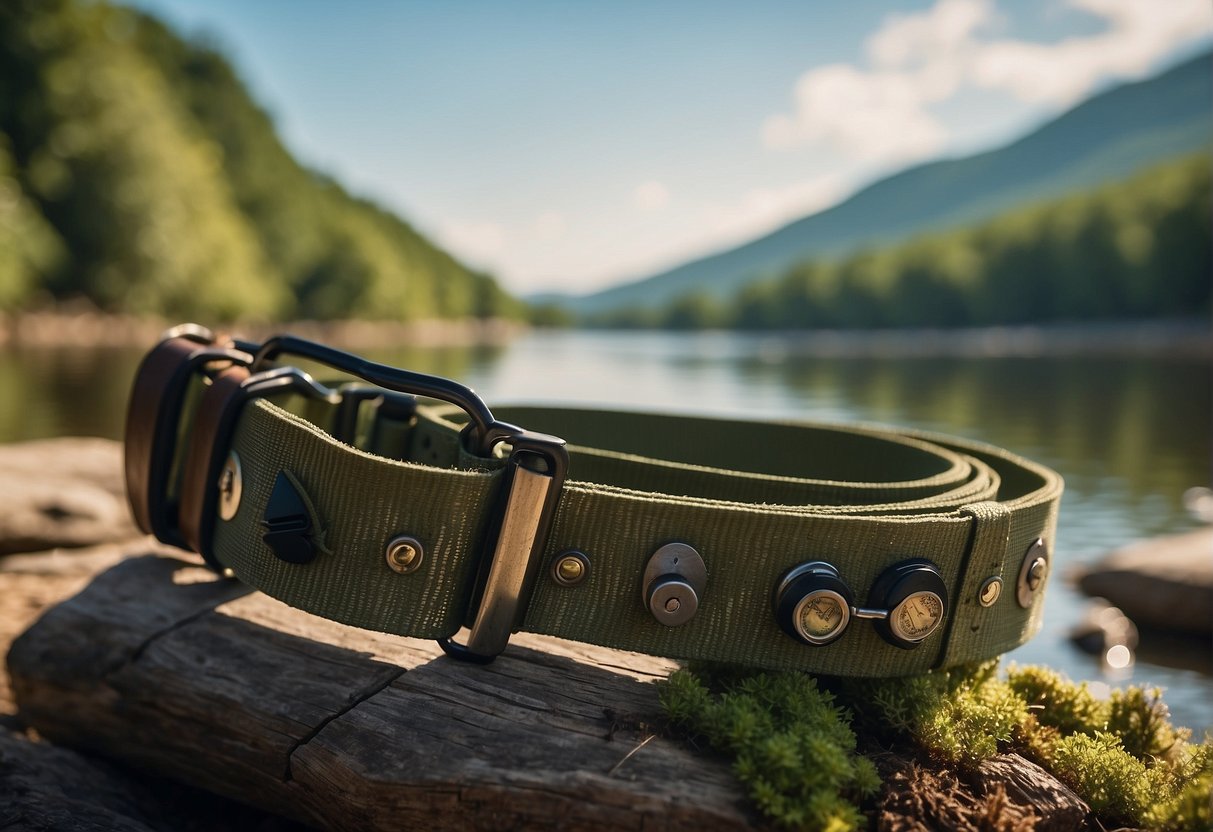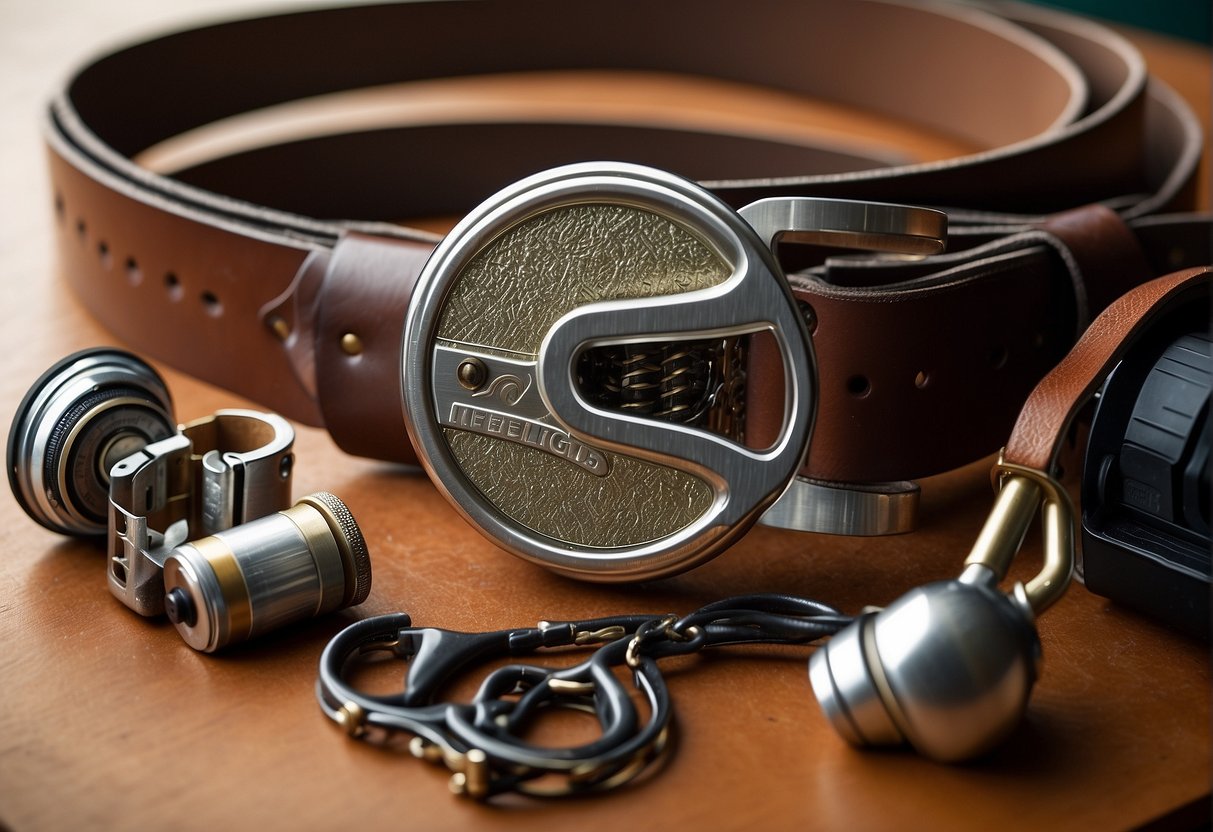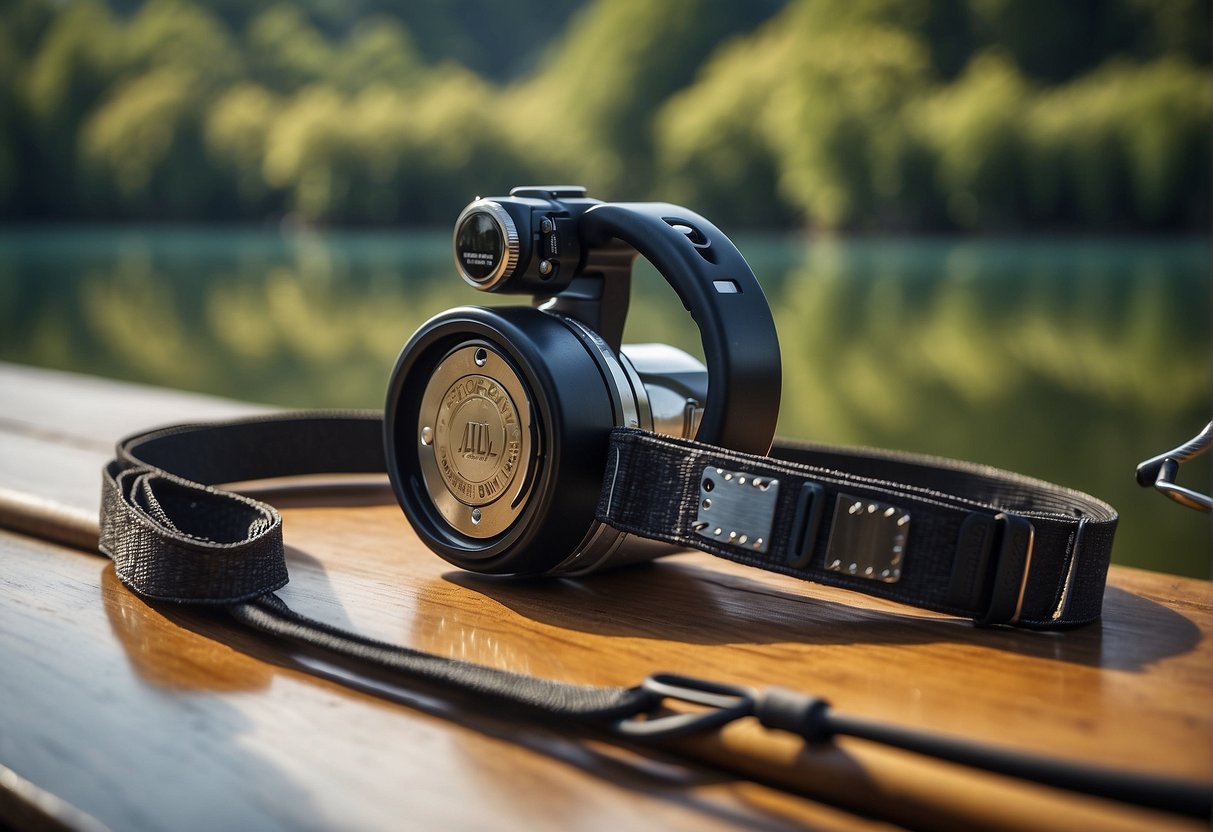Belt Fishing: Reeling in Adventure
*We may earn a commission for purchases made using our links. Please see our disclosure to learn more.
Belt Fishing Techniques: Mastering the Art of Angling from a Belt
As an angler who relishes the thrill of the catch, I’ve found that belt fishing elevates the entire experience by providing the necessary comfort and leverage. When targeting powerful species, it’s essential to have the right gear, and fishing belts, often referred to as fighting belts, serve as a fundamental component. These belts are designed to distribute the strain of a tugging fish across my waist, enabling me to handle heavier tackle and fight big fish for extended periods. This makes the challenge not only more manageable, but also more enjoyable, as it reduces the fatigue associated with a prolonged struggle.
The selection of a fishing belt hinges on various factors such as the tackle being used and the size of fish I expect to encounter. For light-duty situations, a simple belt with a gimbal or pocket for the rod butt usually suffices. This type allows me to fish comfortably using tackle no heavier than the 80-pound class with less than 30 pounds of drag. However, when I’m after larger game and using heavier tackle, opting for a more heavy-duty belt with a harness attachment helps me to exert greater force when reeling and provides extra support to my lower back. The right belt not only improves my fishing efficiency but also ensures a more pleasurable experience on the water.
Essentials of Belt Fishing

Belt fishing is a unique approach that greatly enhances my efficiency and control when angling. I’ve found that selecting the ideal belt and ensuring its durability can make a significant difference in my fishing experiences.
Choosing the Right Fishing Belt
When I select a fishing belt, the first thing I consider is its purpose. If I’m after larger fish, I need a belt that can accommodate a fighting harness. For wade fishing, the belt must be able to keep my gear secure and to hand. I look for a comfortable fit and secure closure to ensure the belt stays in place during long fishing sessions.
- Comfort: I ensure the padding is adequate, particularly with neoprene, which provides a balance of comfort and sturdiness.
- Fit: The belt must adjust to the contours of my body for a tight yet comfortable hold.
Materials and Durability
The materials of my fishing belt need to withstand the rigors of frequent use and harsh marine environments. Here are the key considerations:
- Neoprene: This material offers a good level of comfort and is often used in the padding of fishing belts for its durability.
- Durable Materials: High-quality webbing, corrosion-resistant hardware, and reinforced stitching are non-negotiable features – they ensure longevity and resilience.
Selecting a quality fishing belt is not only a matter of comfort but also an investment in my fishing gear’s durability.
Fishing Equipment Integration

When integrating various fishing equipment with a belt, anglers will find improved efficiency and comfort. I focus on how the belt serves as a central hub for crucial gear through its rod holder features and utility storage options.
Rod Holder Features
Rod holder features on fishing belts are designed to secure the rod and reel, freeing up my hands and reducing arm fatigue. Below are specific features that are often found in effective fishing belts:
- Gimbal Pin: This locks the rod in place, preventing it from spinning during a fight with a fish.
- Adjustable Slot: Accommodates different rod butt sizes for a secure fit.
- EVA Foam Padding: Provides cushioning for my waist, adding comfort during long battles.
Utility and Tackle Storage
A well-designed utility belt in fishing allows easy access to tackle and tools while keeping them organized. Here’s how I utilize the storage features of my fishing belt:
- Pliers Holder: For quick access to remove hooks or cut lines, which ensures I don’t lose time searching through a tackle box.
- Built-in Tackle Storage: Small, dedicated pockets for items like hooks, lures, sinkers, and swivels ensure I have what I need within reach.
- Stringer Attachment: A loop or clip where I can securely attach a stringer keeps my catch safe while I continue fishing.
By effectively integrating these elements, my fishing excursions are seamless, and I can focus on the joy of angling with all my essential gear conveniently at hand.
Belt Fishing in Saltwater Environments
When I engage in saltwater belt fishing, one essential aspect is understanding the particular gear and requirements exclusive to this type of fishing. I’ve found that the right equipment is critical for both success and safety, especially since saltwater fishing can involve larger game fish and more challenging conditions.
Special Considerations for Saltwater Fishing
Gear Durability: The corrosive nature of saltwater demands that I select gear, including waders and belts, made from corrosion-resistant materials. Stainless steel or high-grade plastics are common for any attachments or tools I carry.
- Fighting Belts: I always ensure my fighting belt is designed for saltwater use, with padding for comfort during long fights and the strength to handle the pull of large game fish.
Wade Fishing Strategy:
- Stealth: In saltwater environments, I approach my target areas quietly to avoid spooking the fish.
- Visibility: Clear water assists in spotting fish, so I often choose belts with integrated storage for polarized sunglasses.
Safety in Waters:
- Waders: Securely fastened waders are vital to prevent water from entering in case of a trip or fall. I check they fit snugly at the waist with a well-adjusted wading belt.
- Gear Accessibility: Saltwater wade fishing belts I use typically feature multiple attachment points. This allows me to have quick access to essential tools, like pliers and line cutters.
Optimizing Comfort and Support

When I’m on the water, ensuring that my gear provides both comfort and support is paramount. My experience has taught me that proper fitting wading belts and technologies engineered for comfort can significantly enhance my fishing adventures.
Finding the Perfect Fit
I start by selecting a belt that offers easy to adjust capabilities. This is crucial because the right fit is not only about comfort but also about safety. I always make sure that the belt fits snugly around my waist without restricting movement.
- Measurements: I take measurements around my waistline where I normally wear pants to determine the correct size.
- Adjustability: I look for belts with adjustable straps to tailor the fit to my body, ensuring it’s neither too tight nor too loose.
Comfort Enhancing Technologies
Comfort is more than just a luxury; it comes from the materials used and the design of the belt.
- Neoprene Padding: I prefer belts with neoprene padding because it offers cushioning that doesn’t compromise on mobility.
- Weight Distribution: I look for designs that evenly distribute weight to reduce strain on any single part of my body.
- Back Support: Since I often wade through the water, additional back support integrated into a wading belt is something I consider essential.
By prioritizing these elements, the belts I choose enable me to fish longer and more effectively, making comfort and support my allies in the pursuit of my next big catch.
Belt Fishing – Affordability and Value

When considering the purchase of a fishing belt, I focus on the value it provides in relation to its cost. The right balance between affordability and the quality of the product is essential, especially when the longevity and effectiveness of the belt in fishing scenarios are taken into account.
Price Points and Quality
In the fishing gear market, I can find a range of wading and standup fishing belts at various price points, each correlating to different levels of quality and features. Wading belts, for instance, can start at around $20, and these are typically basic, with simple closures and limited adjustability. However, they serve their primary purpose of safety.
Moving up the price scale, around the $50 to $100 range, the options feature more advanced materials and may offer additional storage and utility for angling essentials. These mid-tier belts are often sufficient for the needs of the average angler.
For the dedicated fisherman pursuing the ‘big catch’, there are premium belts that exceed $100, which boast state-of-the-art materials, maximum comfort, and customizability. They cater to serious fishing endeavors and are available through specialized outlets like Bass Pro and Amazon.
I ensure to read reviews and compare features of different belts within my budget, as they help me determine the overall value a belt offers outside of just its price. This ensures that I make an informed decision that balances both cost and quality.
Fishing Belt – Local Angling Considerations
When I prepare for belt fishing in different locales, I consider the unique regulations and equipment required specifically for those waters. For Texas, this means understanding the fishing laws and ensuring my gear is suitable for local species.
Fishing in Texas Waters
Texas waters are home to a wide variety of fish, making it a prime destination for anglers like me. Before heading out to the Lone Star State, I ensure that my tackle is up to par and that I have a current fishing license. Here’s what I focus on when belt fishing in Texas:
License Requirements:
- Time-Specific License: Texas offers options such as a one-day “All-Water Fishing License” which is ideal if I plan a short trip. This is often a cost-effective alternative compared to full-season licenses.
Equipment Considerations:
- Fishing Belts: For substantial catches in the Gulf of Mexico, a sturdy belt with an adjustable strap is crucial. I check for belts that can handle Texas-sized fish and that fit comfortably around my waist. A plastic buckle can suffice for lighter tackle, but I opt for a more robust buckle for anything heavier.
- Waist Sizes: Apparel in Texas comes in all sizes to accommodate the diverse angler population. I make sure the belt I choose has a wide range of adjustments to fit any waist size, ensuring stability and comfort.
- Target Species: In shorelines and bays, I could encounter redfish or speckled trout; offshore, it’s snapper, amberjack, or even billfish. I select my belt accordingly, with enough support for long battles against these strong fish.
Technique-Specific Gear:
- Fly Fishing: As a fly fisher, my belt needs aren’t as rigorous. However, when chasing after redfish in the flats, I carry a lightweight belt that holds essential tools and a water bottle, keeping my hands free for casting and line management.
By considering these factors, I’m prepared to adapt my belt fishing approach to the distinctive challenges and opportunities found within Texas waters.
FAQs About Belt Fishing
In this section, I’ll address some common inquiries related to competitive fishing and the use of equipment such as fishing belts. These clarifications should assist both amateur and professional anglers in enhancing their fishing experience.
1. What are the typical entry fees for competitive fishing tournaments?
The entry fees for competitive fishing tournaments can vary widely, ranging from a few dollars for local events to thousands for high-stakes professional competitions. The cost often reflects the tournament’s size, prize pool, and prestige.
2. How are payouts structured in professional fishing events?
Payouts in professional fishing events are typically structured based on the number of participants and the total entry fees collected. A percentage of these fees is allocated to the prize pool, which is then divided among the top finishers, often with the winner taking a significant share.
3. What regulations govern competitive fishing to ensure fair play?
Competitive fishing is governed by rules that include fishing limits, equipment regulations, and ethical standards. These are enforced to ensure fair play and consistency across the sport. Tournament officials may conduct inspections and monitor activities to uphold these standards.
4. How can one follow updates on fishing tournaments on social media platforms?
One can follow updates on fishing tournaments on social media platforms by joining official tournament pages or following hashtags related to the event. Anglers can also look for updates from popular fishing community groups where members often share real-time information.
5. What are the benefits of using a fishing belt during long fishing sessions?
A fishing belt offers several benefits: it secures the rod, reduces strain on my arms, and allows me to maintain better control during long fishing sessions. Good belts also have padding to distribute weight evenly for additional comfort.




